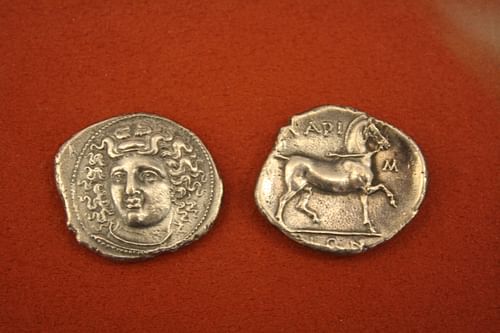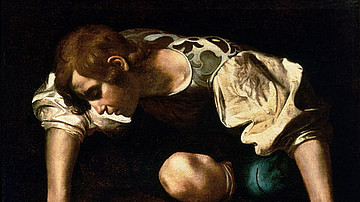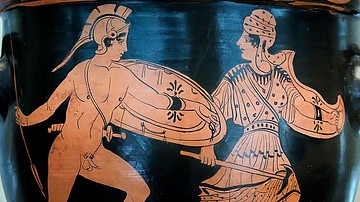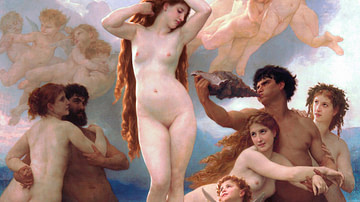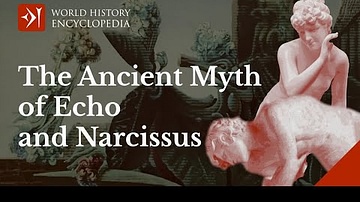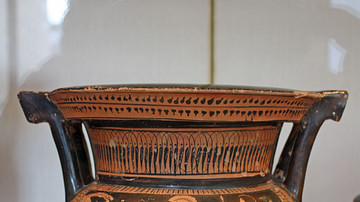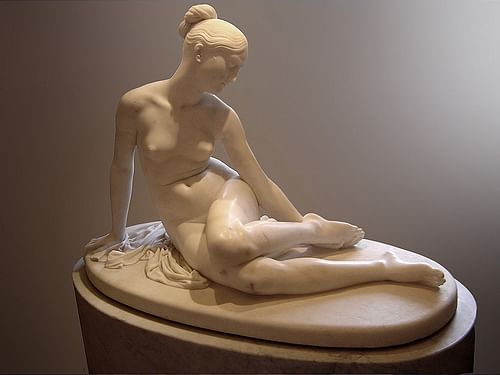
A Nymph (Greek: νύμφη, nymphē) in Greek and in Roman mythology is a young female deity typically identified with natural features such as mountains (oreads), trees and flowers (dryads and meliae), springs, rivers, and lakes (naiads) or the sea (nereids), or as part of the divine retinue of a comparable god such as Apollo, Dionysos or Pan, or goddesses, such as Artemis, who was known as the tutelary deity of all nymphs. Such is the importance of nymphs to the sacred landscape of the Greeks that when in the Iliad Zeus summons the gods into assembly on Mount Olympus, it is not only the well-known Olympians in attendance but also all the nymphs and river gods.
Nymphs are often the mothers of heroes, as was the case for Achilles and Thamyris, on account of the tendency for Greek males to become enamored with their preternatural beauty and seductive charm, so different from the reserved and chaste wives and daughters of the polis or city-state. There are many prominent legends of their affairs with mortal men and gods, as with the tale of Echo and Narcissus, the Abduction of Hylas, Salmacis and Hermaphroditus, and the legend of the shepherd-poet Daphnis. Like Pan, nymphs within their natural habitat may drive mortals insane or insensate (known as nympholepsy), particularly at midday.
Nymphs are also prominently described as daughters of Zeus, of Ge, or of regionally specific river gods such as Acheloös and Cebren. Across the Mediterranean, images of nymphs are found adorning freshwater sources, and shrines dedicated to nymphs have been found in caves across the Greek world, such as at Vari on Mount Hymettus, at Pitsa in Corinth, and at Pharae in Achaea, attesting to their widespread popularity.
Archaeological evidence suggests that the cult of the nymphs in the archaic period was a primary concern of the rural poor, and focused on water sources, which only later became generalized and conflated with other fertility deities and their rites. In this earliest rural form, it was customary for anyone passing a fountain-shrine to leave an offering, typically in the form of an animal sacrifice, such as a portion of a boar, goat, or sheep, which preceded a meal. In time these offerings became increasingly bloodless, culminating with the now-familiar tradition of leaving coins in the fountain-shrine for the resident nymph.
Interest in nymphs amongst the social elite rose in the classical period and reached new heights in the Hellenic Kingdoms, who established nymphaia, highly ornamented public waterworks, which were an important part of urban nuptial rites in which nymphs continued to play an important role. One such nymphaia is the Nymphe of Athens (literally “The Bride”) built on the southern slopes of the Acropolis in Athens, where marriages were held, and prospective suitors could be introduced to marriageable girls. Following the wedding, brides would offer loustrophorai and other vases decorated with wedding scenes, possibly the wedding pottery itself, to the spirit of the sanctuary.
